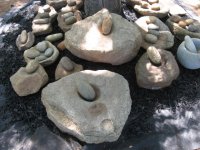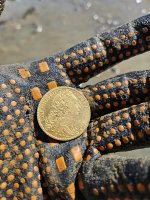IMAUDIGGER
Silver Member
- Mar 16, 2016
- 3,398
- 5,195
- Primary Interest:
- All Treasure Hunting
These were found in the 1950's. They were sitting just like this when they were found. They had been covered with branches and duff. A fire came through and exposed them.


How often are they found with the matching mano?
I see these selling on the Internet frequently..some going for some hefty prices.
This wouldn't be sold, but what do collectors pay for these sorts of items?
Does it matter what the age of other items found in the vicinity were?
Does provenance matter?
I'm sure things like this are sold at yard sales from time to time.


How often are they found with the matching mano?
I see these selling on the Internet frequently..some going for some hefty prices.
This wouldn't be sold, but what do collectors pay for these sorts of items?
Does it matter what the age of other items found in the vicinity were?
Does provenance matter?
I'm sure things like this are sold at yard sales from time to time.
Last edited:
Upvote
0








